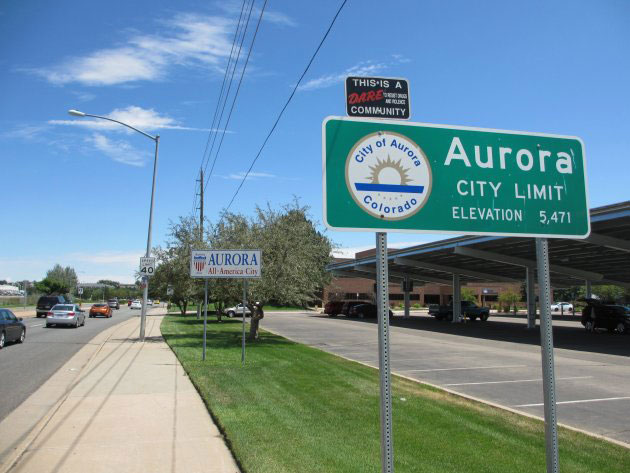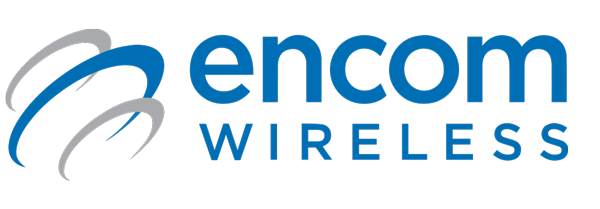Case Study
City of Aurora, Colorado
“The total cost savings, assuming all of our existing signal communications are converted down the road, is in the order of $150,000 a year. It’s a huge improvement, the speed difference alone is considerable.”
Then. Enter Encom. Now.
Managing the ebb and flow of traffic in Aurora, the third-largest city in Colorado, is challenge enough. But for years, the traffic management centre in the Rocky Mountain city of 300,000 people was faced with an additional burden—obsolete communication links that undermined the entire operation. Aurora’s Intelligent Transportation System (ITS) operations hinged on leased telephone lines to each of its approximately 300 traffic controllers. The phone lines, from a regional telecom giant, made up the lion’s share of a $150,000 annual bill for the city. They were antiquated and suspect, with service interruptions that caused constant troubleshooting headaches.
It was up and down. We’d have failures fairly often. It was an issue of sheer aggravation. If communications were interrupted (at a traffic controller), it sometimes took multiple visits to resolve the issue. Usually (the telecom reps) wanted to see their equipment that’s in our signal cabinet, which meant our techs had to go back out and meet the Qwest representative whenever they were available. We wanted our staff to be able to put their attention where they needed to put it, and not have to continue to deal with issues that really shouldn’t keep coming up.
—Anna Bunce, Traffic Controller, City of Aurora

Taking advantage of a long-term U.S. federal grant program, the City of Aurora’s traffic engineering department enlisted the help of ENCOM Wireless. in developing an ITS mesh network that would provide wireless connectivity with the city’s entire complement of traffic controllers.
The wireless solution, which will be rolled out in several phases through 2012, was infinitely preferable to the alternatives, such as copper or fiberoptic cable.
According to recent traffic-industry studies, trenched copper cable costs as much as 10 times as Spread Spectrum wireless networks, while the price tag for buried fiberoptic cable can be 15 times as large.
Fiber, for us, was not really a viable option. Due to the lease lines being individual to the locations, we didn’t have much in the way of actual interconnect between the signals. A lot of our signals are in areas that are already fairly well developed. Even getting the conduit in—totally aside from the cost of pulling the fiber, terminating the fiber, testing everything—would have been substantial.
—Anna Bunce, Traffic Controller, City of Aurora
Working in partnership with the City of Aurora, ENCOM representatives designed an Ethernet-based, future-minded wireless system to accommodate growth, expansion, and modernization to IP-addressable controllers.
The system employs a 5.8-GHz broadband-based backbone, with 802.11a wireless mesh network providing minimum 10 Mbps to each node location, on a main arterial. Perpendicular ribs are formed by using 900 MHz frequency-hopping Ethernet radios, with the ability to communicate long distances under non-line-of-sight conditions, at each controller.
To date, about 60 intersections have been equipped with CommPAK IP 900 radios.
Meanwhile, about 25 CommPAK BB 58 units along the system’s backbone form a mesh network—which provides an extremely secure, reliable, and flexible form of communication thanks to its unique tendency to continuously connect and reconfigure itself around broken or blocked paths.
Plans also call for a pair of supporting 5.8-GHz backbones to be installed at a later date.

ENCOM has provided the City of Aurora with a win-win scenario—enhancing service while also improving the bottom line.
The total cost savings, assuming all of our existing signal communications are converted down the road, is in the order of $150,000 a year. It’s a huge improvement, the speed difference alone is considerable. On a day-to-day basis, that may not make a huge difference, but we do occasionally need to push out updated signal timing to a whole corridor at once. Being able to do it at 19.2K or 38.4K instead of 1,200 baud makes a big difference.
—Anna Bunce, Traffic Controller, City of Aurora
ENCOM’s CommPAK BB units combine the latest in MPEG compression and state-ofthe- art modem technology, allowing low-latency communications and crisp video feeds.
Presently, Aurora’s traffic management officials are using the Ethernet system to provide video detection, oversee three mid-arterial-sized Dynamic Message Signs, and control backup uninterruptible power supplies (UPS) and malfunction management units.
They’ve even seen a big improvement back at HQ.
Our technicians and our main server are in two different buildings. There was a copper connection running across the parking lot that was really slow, so we replaced that with a pair of nodes. That’s really helped out a lot, as far as communication between the technicians’ work station and the main server goes.
—Anna Bunce, Traffic Controller, City of Aurora
What’s Next?
Thanks to some long-view thinking, ENCOM has provided the City of Aurora with a dedicated wireless communication system that allows for growth, expansion and modernization. Bunce says Aurora’s traffic engineering department is looking into funding for video cameras with PTZ (pan tilt zoom) control. She’s also examining the possibility of system detection—specifically, continuous real-time speed and volume information, and real-time travel time information.
I’d love to have a travel-time map or speed map for the public.
— Anna Bunce, Traffic Controller, City of Aurora

